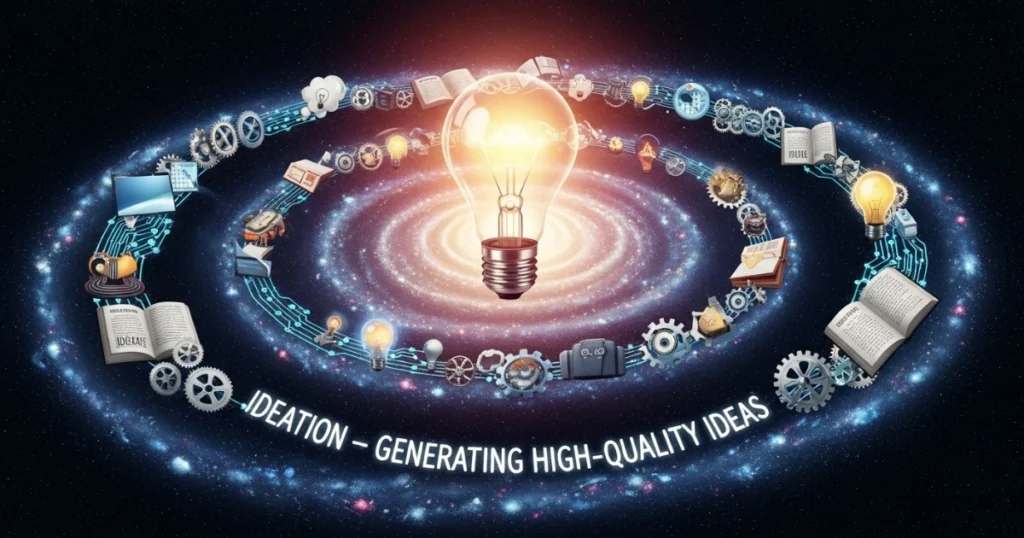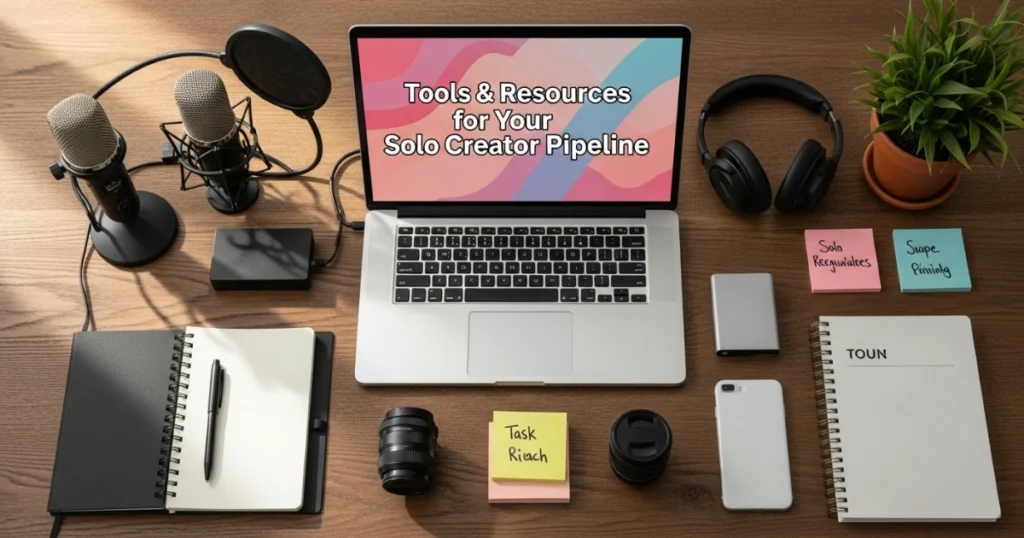
AI Content Creation
Solo Creator Pipeline: Build Your Content Empire in 2025

Contents
- 1 What Is a Solo Creator Pipeline?
- 2 Step 1: Ideation – Generating High-Quality Ideas
- 3 Step 2: Planning – Structuring Your Content
- 4 Step 3: Creation – Producing Engaging Content
- 5 Step 4: Optimization – Boosting Visibility
- 6 Step 5: Distribution – Sharing Your Content
- 7 Step 6: Analysis – Measuring Success
- 8 Overcoming Common Challenges in the Solo Creator Pipeline
- 9 Tools and Resources for Your Solo Creator Pipeline
- 10 Scaling Your Solo Creator Pipeline
The solo creator pipeline is your blueprint for transforming ideas into impactful content while maximizing efficiency in 2025. As a solo creator, you wear multiple hats—content strategist, writer, designer, and marketer—all while juggling limited time and resources. Building a streamlined pipeline allows you to produce consistent, high-quality content that resonates with your audience and grows your brand. In this article, we’ll explore how to create an effective solo creator pipeline, optimize your workflow, and leverage tools and strategies to save maximum time. Whether you’re a blogger, YouTuber, or social media influencer, this guide will help you scale your creative process without burning out.
What Is a Solo Creator Pipeline?
A solo creator pipeline is a structured process that guides your content from ideation to distribution. Unlike large teams with dedicated roles, solo creators must manage every stage themselves. Therefore, a well-designed pipeline is essential for staying organized and productive. By implementing a clear system, you can reduce decision fatigue, maintain consistency, and focus on creating content that engages your audience.
Why You Need a Solo Creator Pipeline
Without a pipeline, solo creators often face overwhelm, missed deadlines, and inconsistent output. A structured approach saves maximum time by automating repetitive tasks and streamlining decision-making. For instance, batching content creation or using templates can cut production time significantly. Additionally, a pipeline ensures your content aligns with your brand and goals, helping you build trust with your audience.
Step 1: Ideation – Generating High-Quality Ideas
The first step in your solo creator pipeline is ideation. Great content starts with great ideas. To generate ideas that resonate, begin by understanding your audience’s needs and pain points. Use tools like Google Trends, AnswerThePublic, or social media platforms to identify trending topics. For example, if you’re a fitness creator, search for queries like “home workouts 2025” to spark ideas.

Tips for Effective Ideation
- Brainstorm Regularly: Dedicate 30 minutes weekly to jot down ideas. Use a notebook or apps like Notion to organize them.
- Leverage Audience Feedback: Monitor comments, DMs, and polls on platforms like X to uncover what your audience wants.
- Analyze Competitors: Study successful creators in your niche to identify gaps you can fill with unique content.
By consistently generating ideas, you’ll have a content bank ready, saving maximum time when planning.
Step 2: Planning – Structuring Your Content
Once you have ideas, the next step is planning. A solid plan outlines your content’s format, goals, and distribution strategy. For instance, will your idea become a blog post, video, or social media series? Planning ensures your content aligns with your brand and audience expectations.

Creating a Content Calendar
A content calendar is a game-changer for solo creators. Tools like Trello, Asana, or Google Calendar help you schedule posts and track deadlines. Plan at least a month in advance to maintain consistency. For example, schedule blog posts for Mondays and videos for Thursdays to create a predictable rhythm for your audience.
Batch Planning to Save Time
To maximize maximum time savings, batch your planning. Set aside one day to outline multiple pieces of content. Create templates for blog posts, scripts, or social media captions to streamline the process. Templates ensure consistency and reduce the time spent starting from scratch.
Step 3: Creation – Producing Engaging Content
The creation phase is where your ideas come to life. Whether you’re writing a blog, filming a video, or designing graphics, this step requires focus and efficiency. To save maximum time, break creation into manageable tasks and use tools to simplify the process.

Tools for Content Creation
- Writing: Use Grammarly or Hemingway to polish your text quickly.
- Video Editing: Tools like CapCut or Adobe Premiere Rush offer user-friendly interfaces for solo creators.
- Graphic Design: Canva’s templates make it easy to create professional visuals without design skills.
Batching Content Creation
Batching is a powerful technique for solo creators. For example, write multiple blog posts or film several videos in one session. This approach minimizes setup time and keeps you in a creative flow. Additionally, repurpose content across platforms—turn a blog post into a video script or social media thread—to maximize reach with minimal effort.
Step 4: Optimization – Boosting Visibility
Optimization ensures your content reaches the right audience. For solo creators, this means mastering SEO, social media algorithms, and analytics. By optimizing your content, you increase its discoverability and engagement.

SEO for Solo Creators
To rank higher on search engines, incorporate keywords strategically. With a keyword density of 1% for “solo creator pipeline,” use the phrase naturally in headings, subheadings, and body text. For example, include related terms like “content creation workflow” or “solo content strategy” to enhance relevance. Additionally, optimize images with descriptive alt text and ensure fast-loading pages to improve user experience.
Social Media Optimization
On platforms like X, use hashtags, engaging captions, and eye-catching visuals to boost visibility. Post at peak times when your audience is active, and engage with comments to build community. For instance, a well-timed post on X about your latest blog can drive traffic and spark conversations.
Step 5: Distribution – Sharing Your Content
Distribution is about getting your content in front of your audience. As a solo creator, you need a multi-channel strategy to maximize reach. Share your content on your blog, social media, email newsletters, and platforms like YouTube or X.

Automating Distribution
To save maximum time, use automation tools like Buffer or Hootsuite to schedule social media posts. For email newsletters, platforms like Mailchimp allow you to automate campaigns. Set up a distribution schedule to ensure consistent posting without manual effort.
Cross-Promoting Content
Cross-promote your content to amplify its reach. For example, share a snippet of your blog post on X with a link to the full article. Similarly, embed YouTube videos in your blog to keep visitors engaged longer. This approach stretches your content’s lifespan and attracts new followers.
Step 6: Analysis – Measuring Success
The final step in the solo creator pipeline is analyzing performance. Use analytics to understand what works and refine your strategy. Tools like Google Analytics, YouTube Studio, or X’s analytics dashboard provide insights into views, engagement, and conversions.

Key Metrics to Track
- Traffic: Monitor page views and unique visitors to your blog or videos.
- Engagement: Track likes, comments, and shares on social media.
- Conversions: Measure actions like email sign-ups or product purchases.
By reviewing these metrics, you can identify high-performing content and replicate its success. For example, if a video on “content creation tips” gets high engagement, create similar content to keep your audience hooked.
Overcoming Common Challenges in the Solo Creator Pipeline
Solo creators often face obstacles like burnout, time constraints, and limited budgets. Here’s how to address them:

Combating Burnout
To avoid burnout, prioritize self-care and set realistic goals. For instance, limit content production to 3–4 pieces per week to maintain quality without exhaustion. Additionally, take breaks and delegate minor tasks, like scheduling posts, to automation tools.
Managing Time Effectively
Time management is critical for solo creators. Use the Pomodoro technique—25 minutes of focused work followed by a 5-minute break—to stay productive. Moreover, prioritize high-impact tasks, like content creation, over low-value activities, like excessive email checking.
Stretching a Limited Budget
You don’t need expensive tools to succeed. Free or affordable options like Canva, CapCut, and Google Analytics can deliver professional results. Additionally, invest in learning SEO and social media strategies to grow organically without paid ads.
Tools and Resources for Your Solo Creator Pipeline
To build an efficient pipeline, leverage tools that save maximum time and enhance quality. Here’s a curated list:

- Ideation: AnswerThePublic, Google Trends
- Planning: Trello, Notion
- Creation: Canva, Grammarly, CapCut
- Distribution: Buffer, Mailchimp
- Analytics: Google Analytics, YouTube Studio
These tools are user-friendly and budget-friendly, making them ideal for solo creators.
Scaling Your Solo Creator Pipeline
As your audience grows, your pipeline should evolve. Consider these strategies to scale:
- Outsource Tasks: Hire freelancers for editing or graphic design to free up time.
- Build a Community: Engage your audience on X or through email to create loyal fans who share your content.
- Monetize Your Content: Explore affiliate marketing, sponsorships, or digital products to generate income.
By scaling strategically, you can turn your solo creator pipeline into a sustainable content empire.
Conclusion
Building a solo creator pipeline is the key to producing consistent, high-quality content while saving maximum time. By following the steps outlined—ideation, planning, creation, optimization, distribution, and analysis—you can streamline your workflow and grow your brand in 2025. Start small, leverage the right tools, and refine your process based on analytics. With dedication and a well-structured pipeline, you’ll transform your creative vision into a thriving content business. Take action today: map out your pipeline, batch your tasks, and watch your productivity soar.


Prompt to Publish System: Streamlining Content Creation in 2025
Updated on August 13, 2025
Read More